Nineveh We Are Coming & The Beauty of Great Game Design
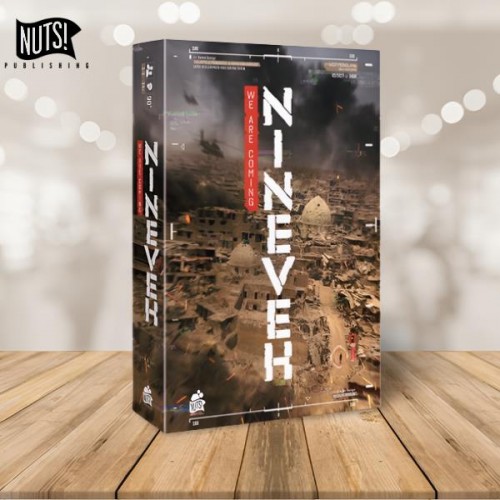 By Mitch Reed
By Mitch Reed
One of the benefits of my day job is that I get to play games at work for research and recently some co-workers and I tried out Nineveh: We are coming from Nuts! Publishing (a company I really like).
Since I knew two members of the design team, Rex Brynen and Brian Train, I felt that the game would be something special and after we played it one afternoon, I saw how great designers can abstract a difficult concept and bring a solid game to the market.
Nineveh is about the recapture of Mosul Iraq in 2017, a military operation that exceeded expectations and showed the ability of the Iraqi Security Forces (ISF). The battle itself was an urban fight between regular forces versus the Daesh which was an unconventional force. This topic and environment alone would be a challenge to any designer, however, the team (with Juliette Le Ménahèze and Harrison Brewer alongside Rex and Brian) was able to make Nineveh a fun game and if you are not careful you can learn something about the battle and how to create a game that takes place in an asymmetric environment.
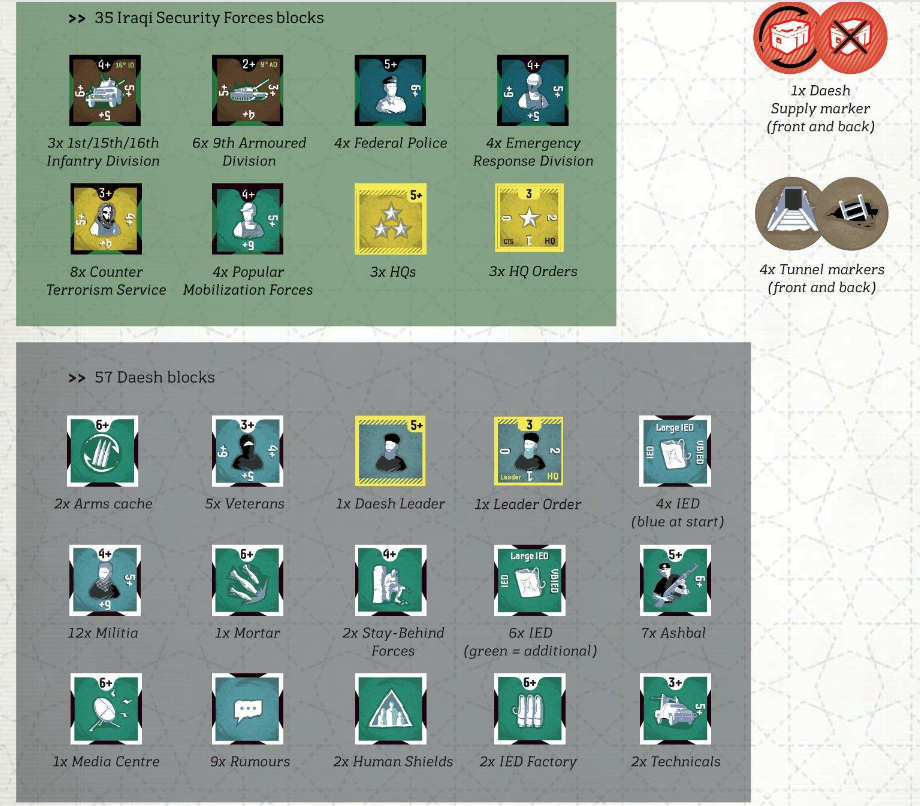
The game uses blocks to simulate “fog of war” along with a mounted map and cards that represent random events, unit strengths along with additional capabilities that a player can select before the game to use in the battle.
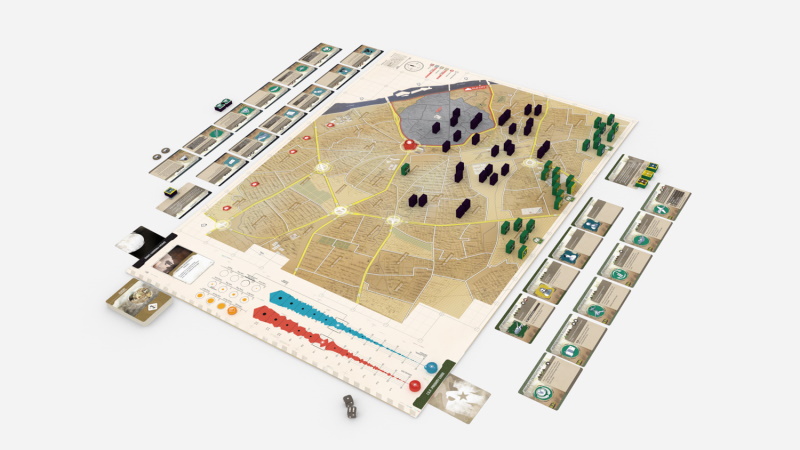
Gamers should pay attention to the events and additional capabilities cards mentioned above because they are the unsung heroes of the design. The events deck represents a random effect that suddenly occurs during gameplay whenever a one or a six is rolled. These events add to the fog of war and a bit of Murphy in how the game plays.
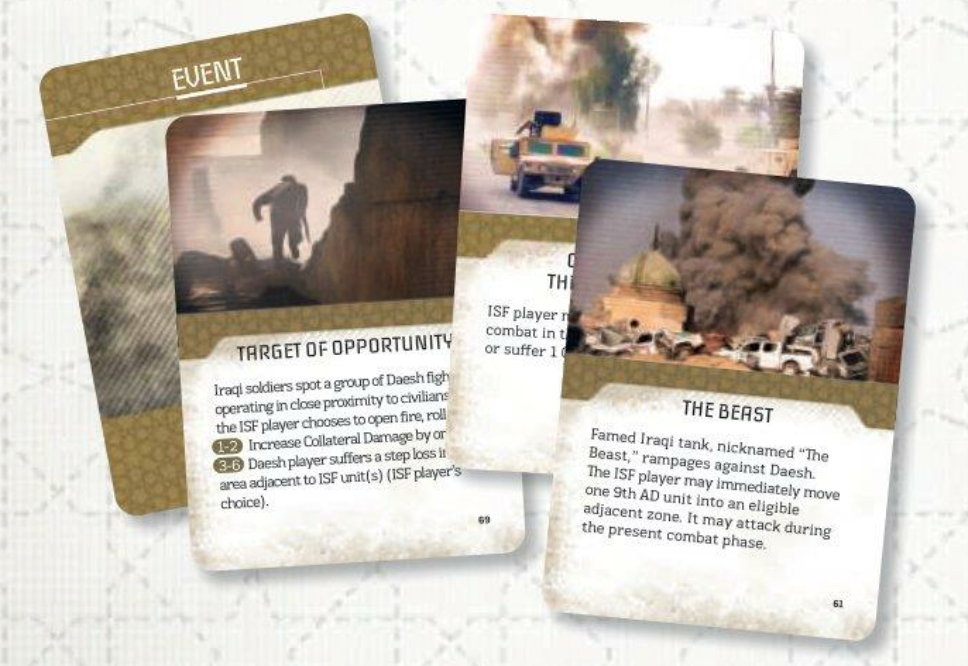
Some events really change the environment and your decision making and some have a negligible effect on what you are doing at that moment.
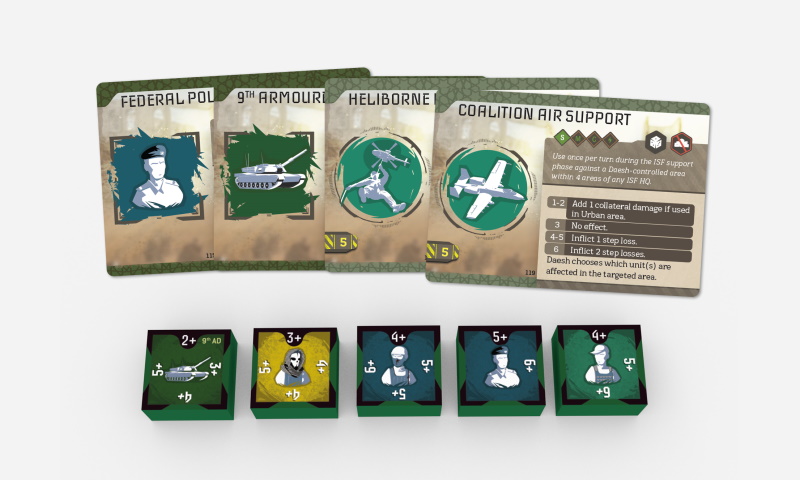
The additional capabilities deck is a brilliant mechanic that abstracts so much yet has a major impact on play. During set up each player has thirty points to select capabilities that augment their forces from a side-unique player deck. The ISF player can take coalition (US) capabilities such as fire missions, UAVs, and improved ISR capabilities along with additional ground forces and capabilities such as improved EOD and field hospitals. The Daesh player can take additional units as well, and other capabilities such as tunnels, IED vests, mortars, production units, and child soldiers.
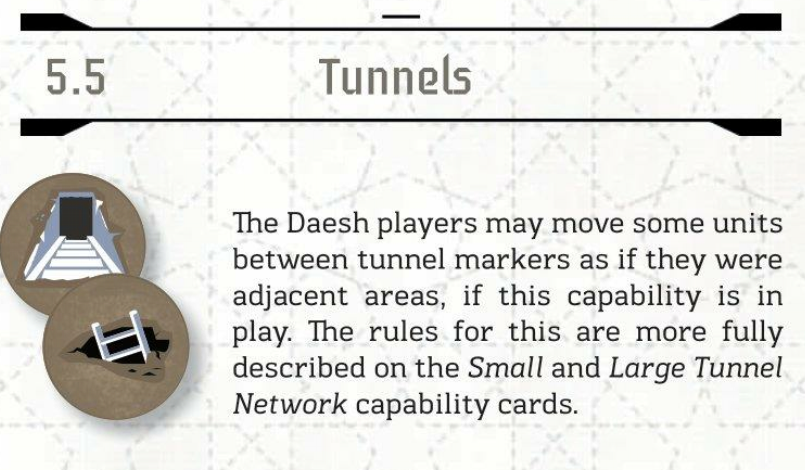
This mechanic gives the players a lot of agency on how they will execute their battle plan and keeps the game very re-playable. Many times, I wished I spent my points on other capabilities because I could use them at that moment. It also teaches a player to create a force based on their playing style and how they pick the victory condition of the game.
The victory conditions and how they play in the game are also a great unique design feature. Each player can select one of three metrics on what they want to be their primary means to quantify victory and these are kept hidden until the game ends.
Each turn is played with a support phase, movement phase, combat phase and then a turn end-phase, which is straightforward for players to comprehend so turns move quickly. We found that as the game neared its final few turns the game became very tense as each player looked to gain an advantage based on what victory condition they picked before the game.
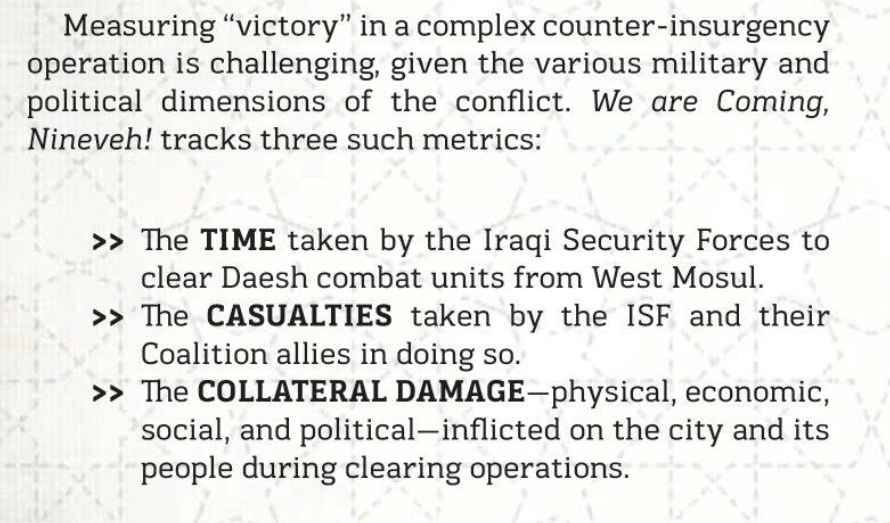
Many may ask what we were using the game for as far as research. We wanted to know if the basic game mechanics could emulate the same decision space for a game that involved a conventional force fighting in an urban environment against an unconventional force that used a lot of asymmetric advantages to fight. While we played through the game, we did see a lot of utility in using some of the mechanics that are used in Nineveh. Of course, we will have to “mod” the game, however, the useful DNA of Nineveh may help us one day.
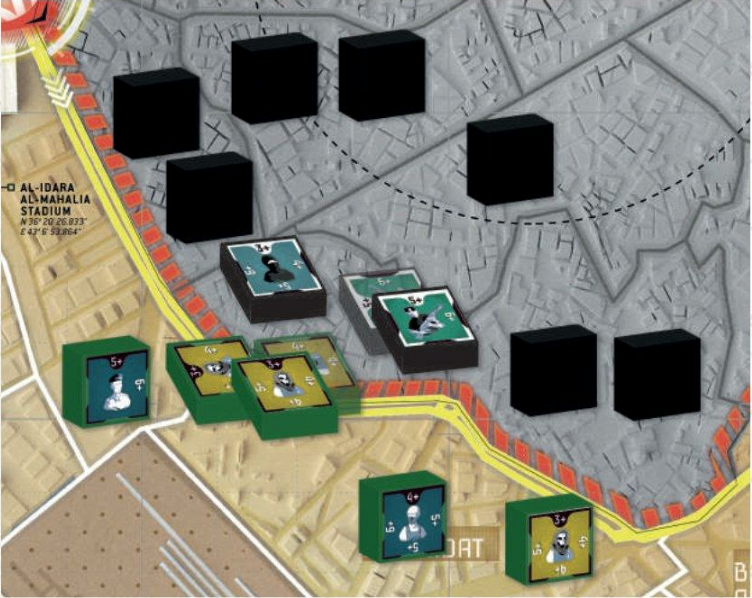
While many who will read this game care more about gameplay as opposed to other applications, I can state that the game is very fun and tense at times and it shows how two vastly different forces fight.
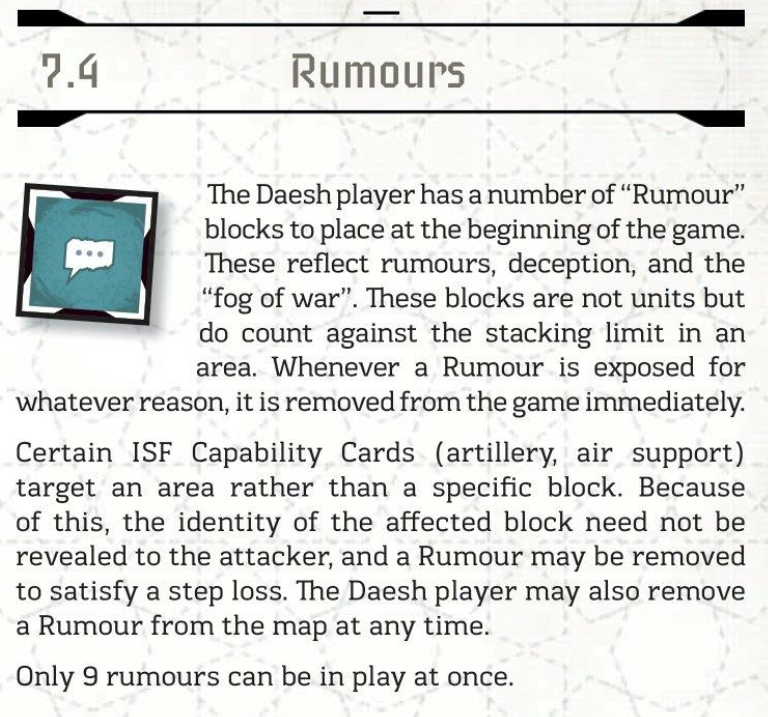
The game also shows what a talented design team can be inspired to do when they allow innovation within their design process. From what I can see, Nineveh follows the basic law of game design, “get the important things right” and then add what supports this rule. It also brilliantly achieves another key element of game design, “abstract complex processes” so that they are gameable and do not insult the intelligence of your players. A lot goes on “under the hood” of Nineveh, however, they are obvious enough to quickly see the minutiae of warfare.
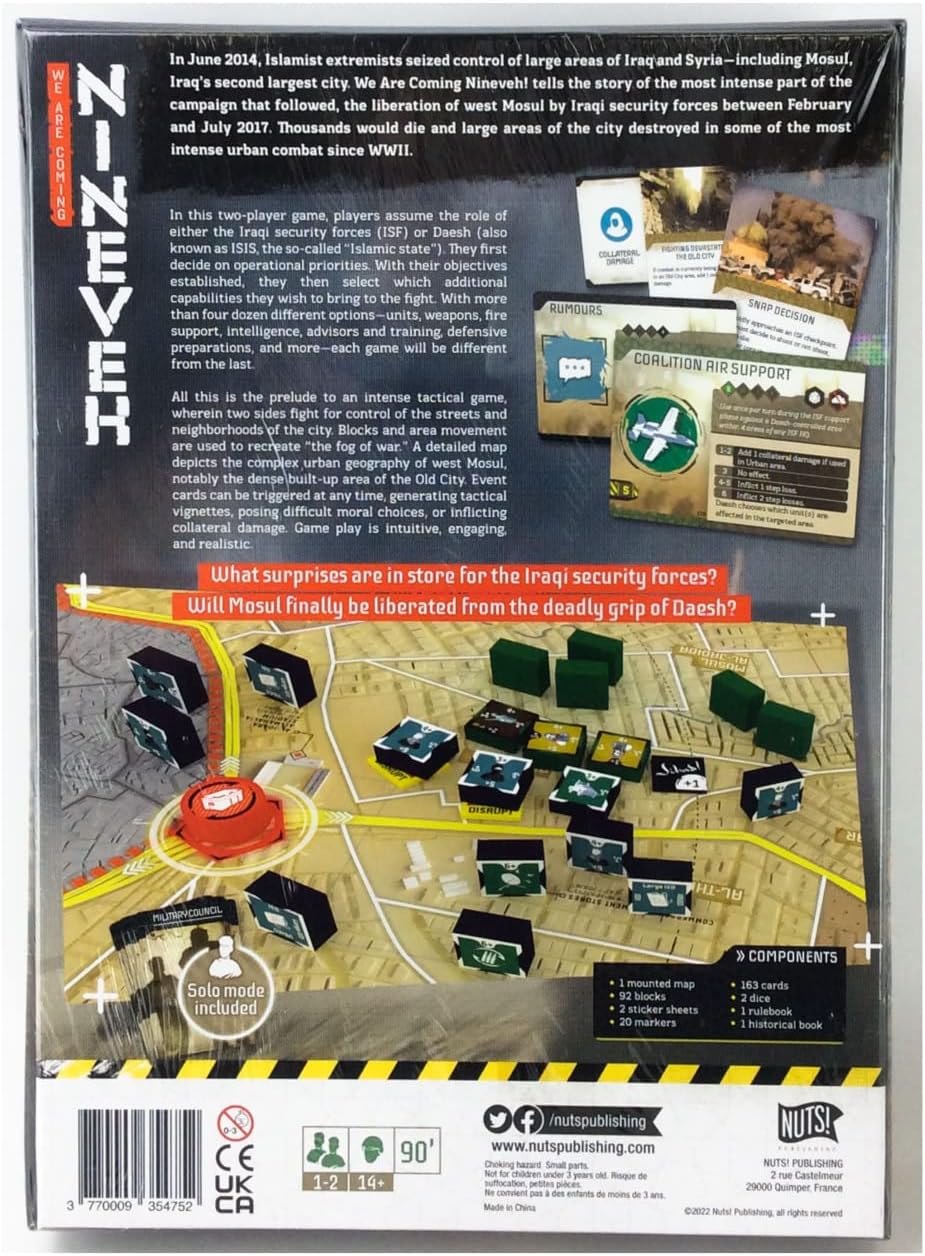
Will this game make you a military expert on modern urban asymmetric warfare, well no, but no game can make you an expert on such (or any) a topic, however, will you learn a bit more about it? You will if that is something you also want from a hobby board game.
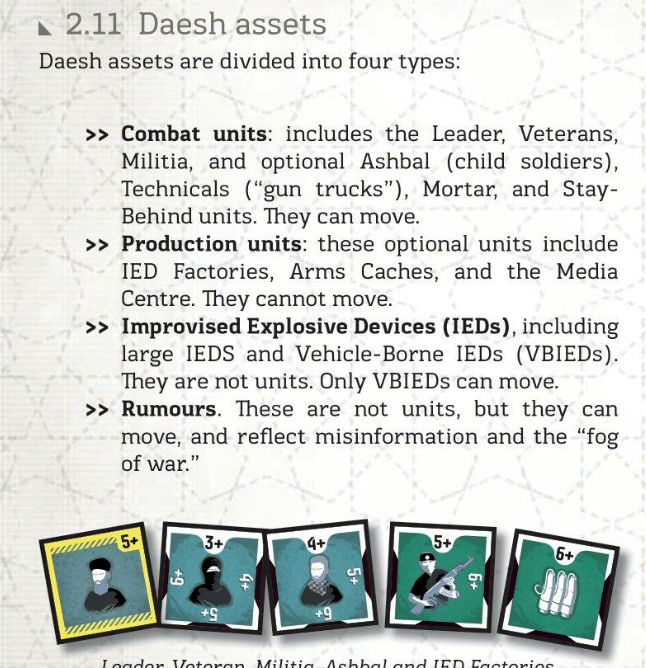
Overall, I really liked Nineveh and cannot wait to play it again try out different force mixes. I also want to check out the solo version of the game. If you want a fun game that you can play over again many times and maybe learn something, then I give this game a strong recommendation.

Thanks for your kind review and I’m glad you enjoyed the game, but I must point out the Juliette and Harrison were the original designers, they created the game for a course that Rex was teaching.
Rex saw considerable commercial potential in the design and asked me to help, and between the two of us we developed the design with the original two. We added some other material (for example, the solo system is by Rex) but really, we were embellishing the work of these two very smart younger people.
I’m even happier that you see some potential in the system. I made a quick variant of the game using its pieces and rules, with a new map for Gaza City, in October 2023 when all the pundits were confident that there would be huge urban battle in the city. It turns out that was not the case but it did show the game’s adaptability.
I’ve done a number of other games on urban warfare – District Commander Maracas, Nights of Fire/ Operation Whirlwind, Civil Power, Sole Tunnels and the QUICK which I designed for the 40ID Urban Operations Planner Course. It’s an important topic.